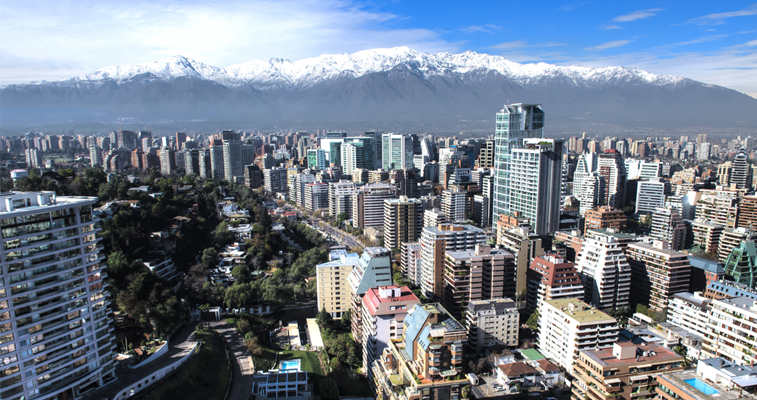Chile's cardinal points
Monday, August 4, 2014

Jorge López Orozco
I had to ask my friends on Facebook to help me decide what to recommend about Chile in this article. The survey produced as many opinions as there are attractions in this country 4,329 kilometers long, yet whose average width is no more than 180 km. My recommendations, duly pondered and not particularly biased, about what to see in my country now follow.
North: Sand
Dry, extremely dry. The Atacama Desert, which occupies a major part of northern Chile, holds the title of “most arid on earth”. But it also has valleys, astronomical observatories, and an excellent, year-round climate.
Its natural attractions include Lauca National Park. This World Biosphere Reserve near the borders with Peru and Bolivia is the great amphitheater of the Chilean altiplano. Among its notable features are Chungará Lake and Parinacota volcano, not to mention the native wildlife. Further south, the Atacama
Desert begins: 105,000 km2 of sand and ocher landscapes. The town of San Pedro is the starting point for visits to Tatio geysers, the Valley of the Moon or the Atacama Salt Flats.
And, 450 km north of Santiago, is Fray Jorge National Park, a green oasis in the midst of all the dryness, a hydrophilic forest rising up by the shore that is nourished by the mist.
Multicultural is a byword in the north. Indigenous groups include Aymaras and Atacamans. Their ancient heritage blends with the modernism of cities like Arica, Iquique or La Serena, and with popular traditions such as the La Tirana Festival in mid-July.
The beaches at Arica are good for surfing, while mountaineering is another option. Nearby is the second highest peak in the Andes, Ojos del Salado, which rises to 6,893 meters above sea level.
South: Ice
This is a destination that whets the appetite, because the overriding cold in southern Chile, amid the rivers, native forests, lakes, volcanoes, islands and glaciers of Patagonia, makes you eat more! And drink…
Colchagua Valley offers extensive wine tours. The ‘water zone’, an area where there is a pronounced Mapuche influence, begins further south, around 800 km. from Santiago.
The Mapuches are the largest indigenous group in Chile, and in places like Temuco, Pucón and Lago Ranco it is possible to see how they live and to enjoy their traditional cuisine. Puerto Montt and the island of Chiloé, meanwhile, are perfect spots for eating fish and seafood.
Enjoying nature in this area always involves adventure: you can climb Villarrica, which is an active volcano, sail for three days towards San Rafael Lake, discover the country’s most important trekking center in Torres del Paine National Park, or visit Navarino island, where Puerto Williams, the most southerly town on earth, is located.
East: the summit
Eastern Chile is just mountains. Towns are few and far between. But the region starts to fill up with people at the beginning of winter, when the cordillera is covered with snow, and ski centers are in full swing from June to October.
Most of them are near Santiago, and are noted for their excellent slopes, stupendous scenery and fine accommodation. What’s the down side? Well, they aren’t cheap. At least, not for skiing, but if you just want to look and travel around, everything is much more affordable.
Portillo, 164 km north of the capital, is almost on the Argentinean border. Its slopes are used by professional European ski teams, in a setting with beautiful panoramic views of the Andes. Nearer Santiago are Farellones, El Colorado, La Parva and Valle Nevado, all on the same route.
West: the shore
The sea is everywhere, the sunsets magnificent. A fishing culture prevails all along Chile’s coastline, and there are numerous ports and rivers that flow into the ocean. However, Valparaíso, a mere 120 km west of Santiago, is the unrivalled queen of the coast. The city is a World Heritage Site, that is currently being successfully restored after a recent fire, and spreads up a series of inhabited hillsides, each with its own identity.
The busiest port in the country, it is an ideal place to walk all day and to enjoy seafood. Most of the important beachess in the central part of the country, to the north and south of Valparaíso, can be reached from the coast roads. Pablo Neruda’s house can be visited on Isla Negra, where Algarrobo and Zapallar, the favorite resort of the local aristocracy, are also located.
Center: the capital
Santiago has seven million inhabitants, and is proud of at least three major culture centers: the Museum of Memory, which tells the story of the last 40 years in the country, the Palacio de la Moneda Culture Center, renowned for its art, cinema and restaurants, and the Museum of Fine Arts, which is home to a vast collection of paintings. For shopping, you should head for the popular Patronato neighborhood, or Parque Arauco and Alto Las Condes malls. Exclusive boutiques will be found in Isidora Goyenechea. For eating and drinking, go to Plaza Ñuñoa,
Bellavista, Manuel Montt and the Italia neighborhood. Important: don’t miss watching the sunset from the top of San Cristobal hill, with views over the whole city and the Mapocho River beneath you.
You may find more destination articles at www.aviancaenrevista.com.
.jpg)
